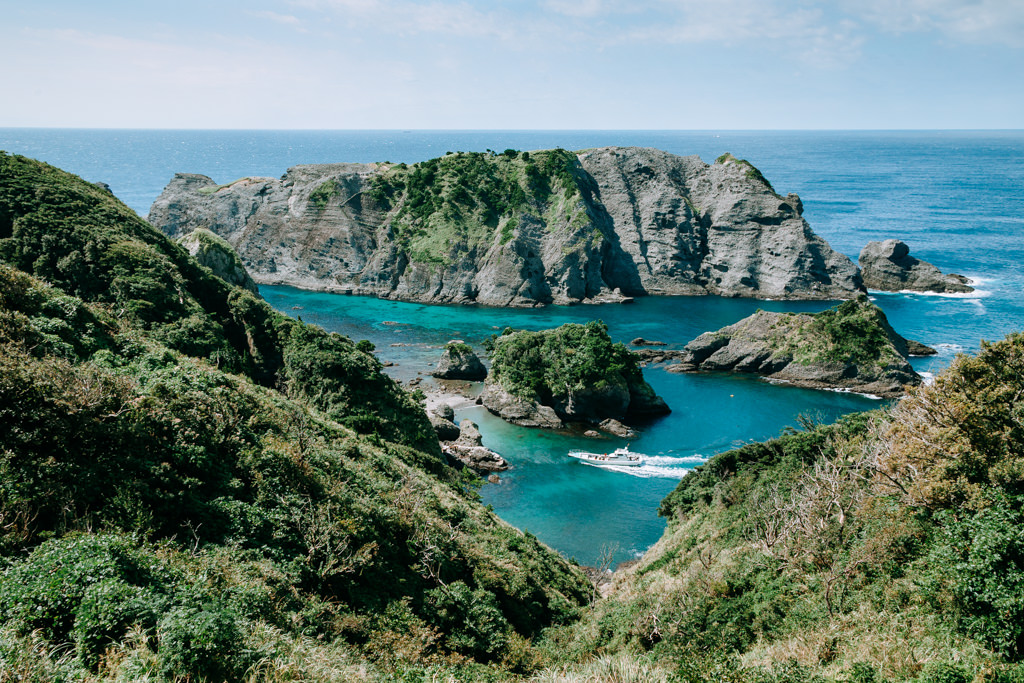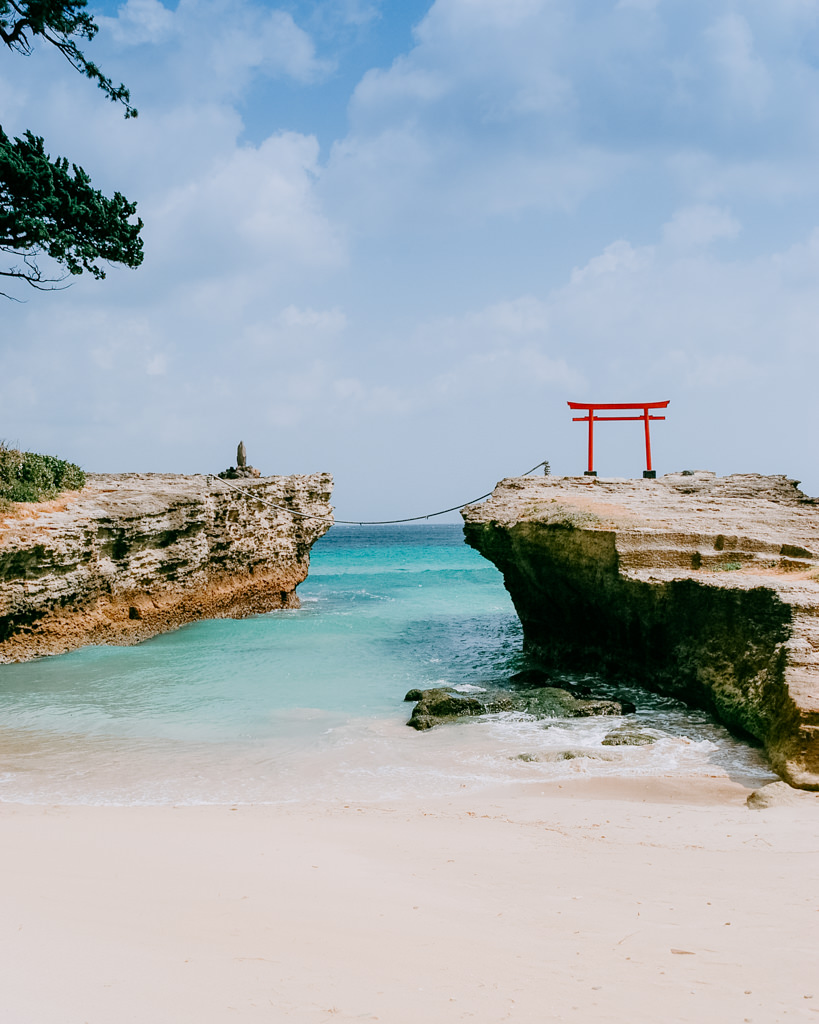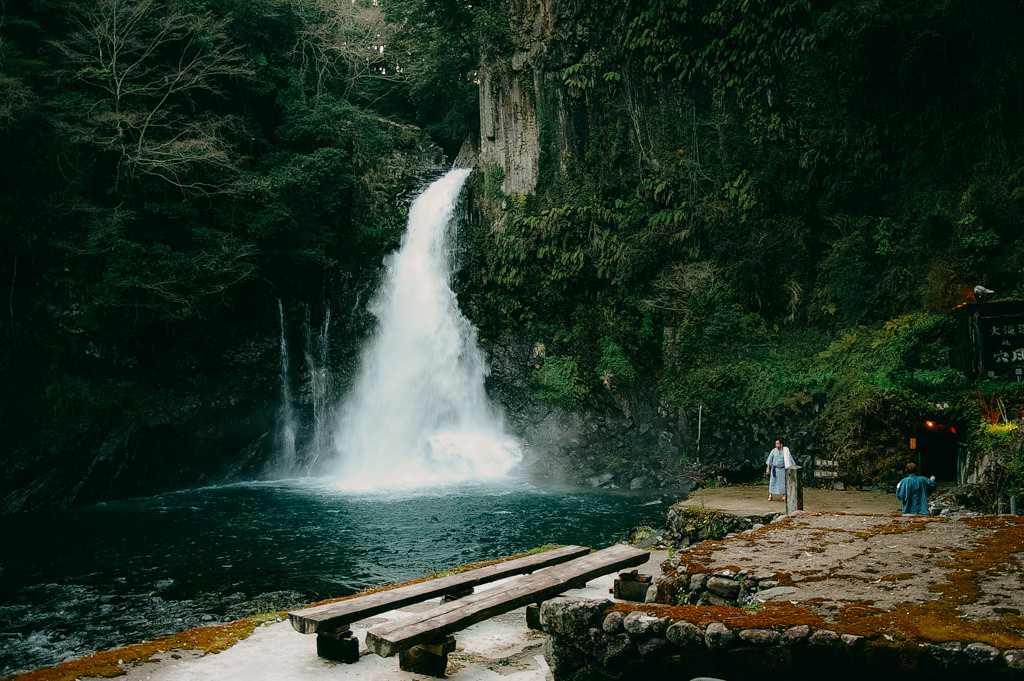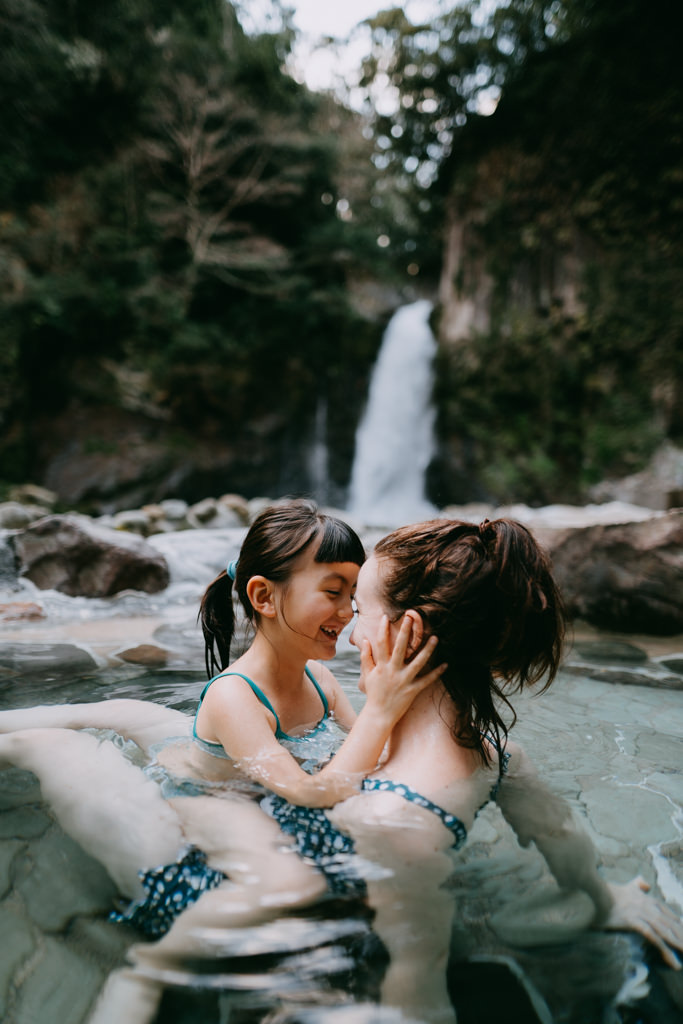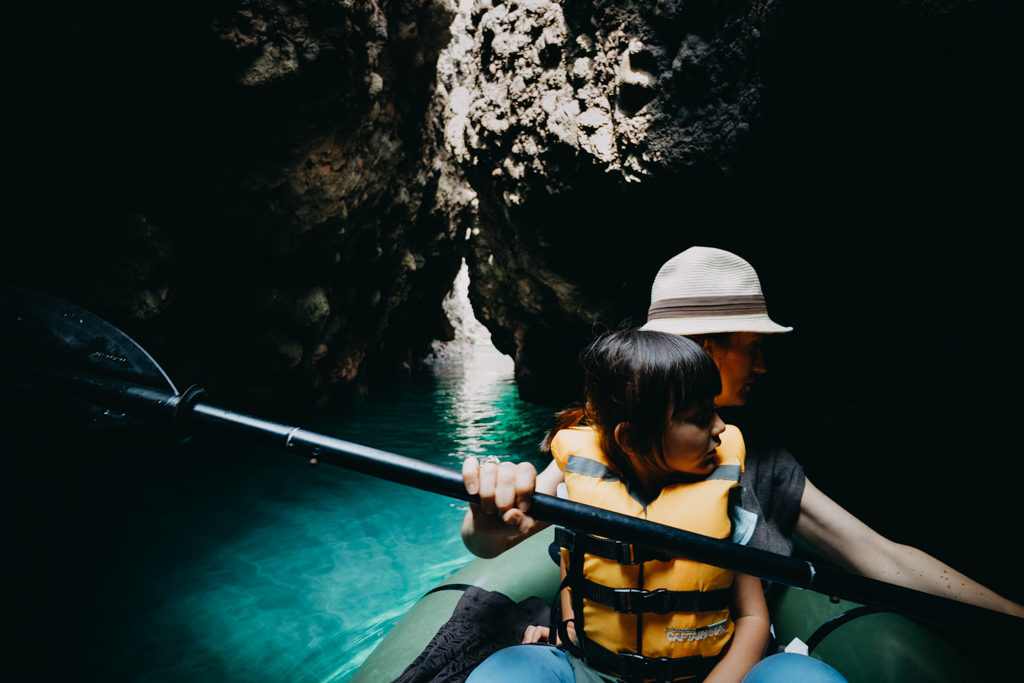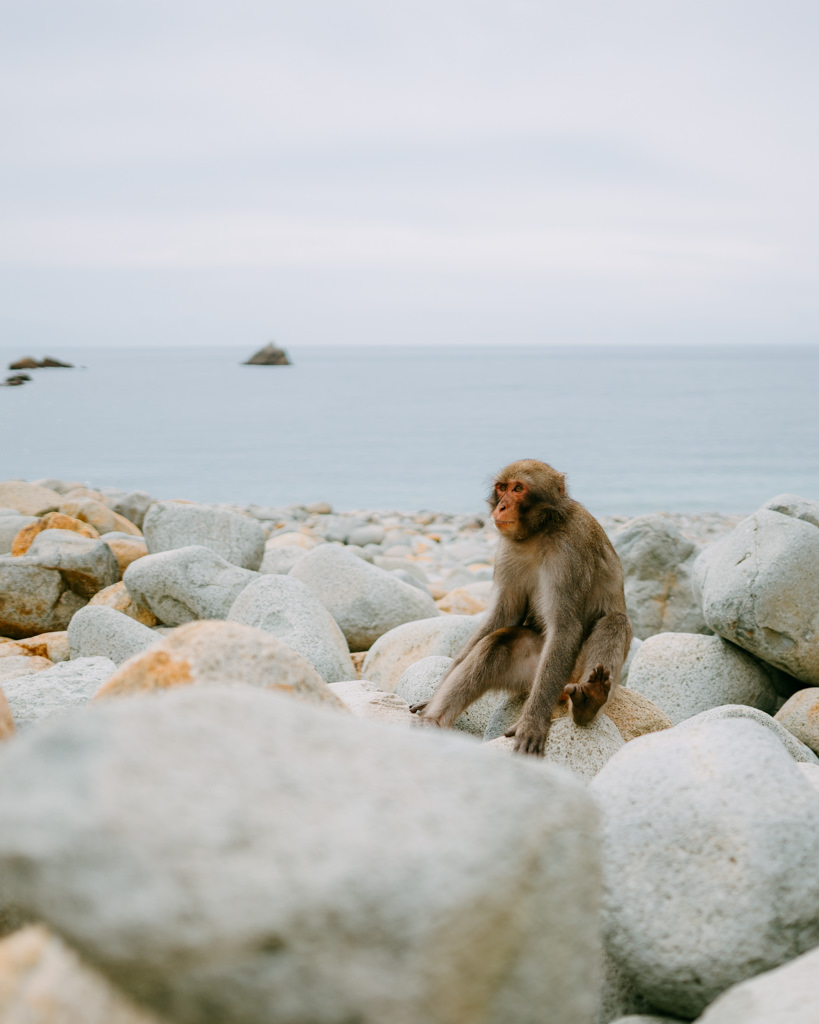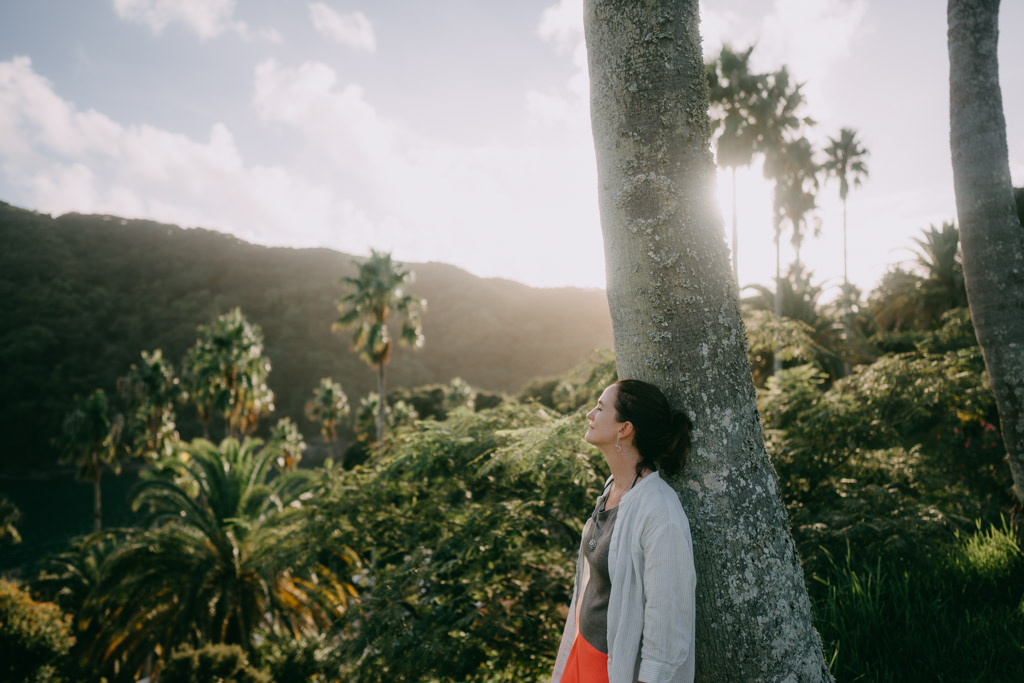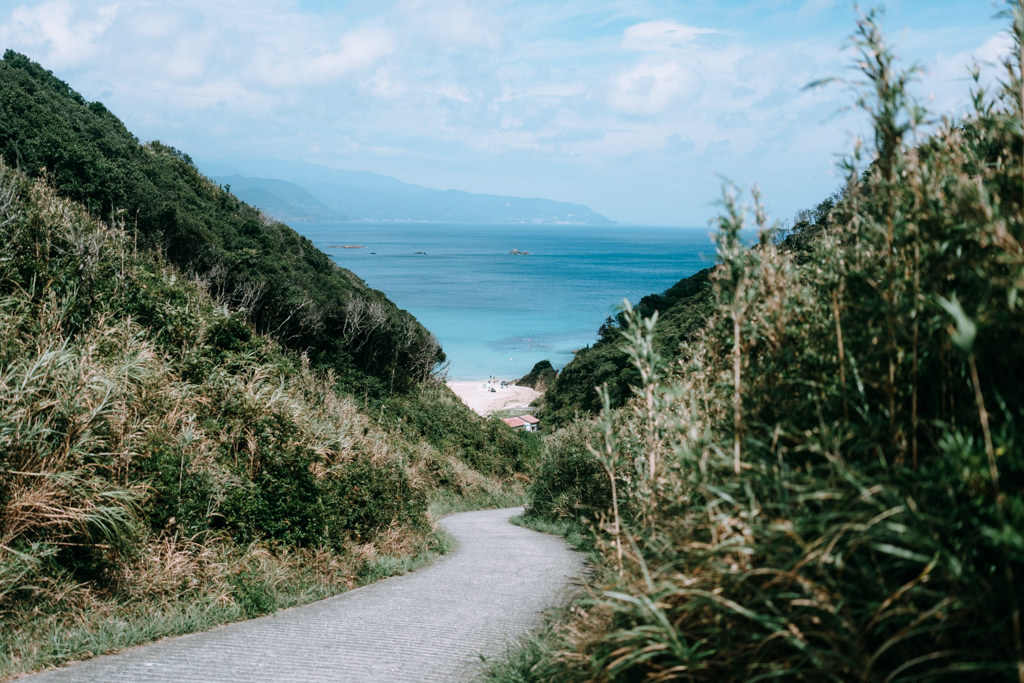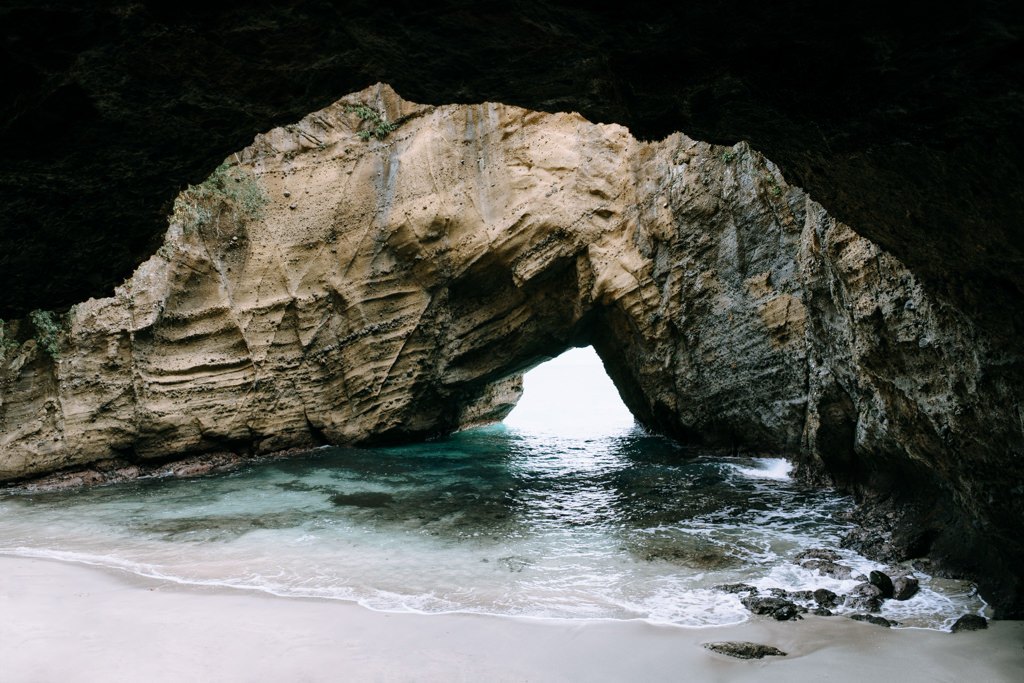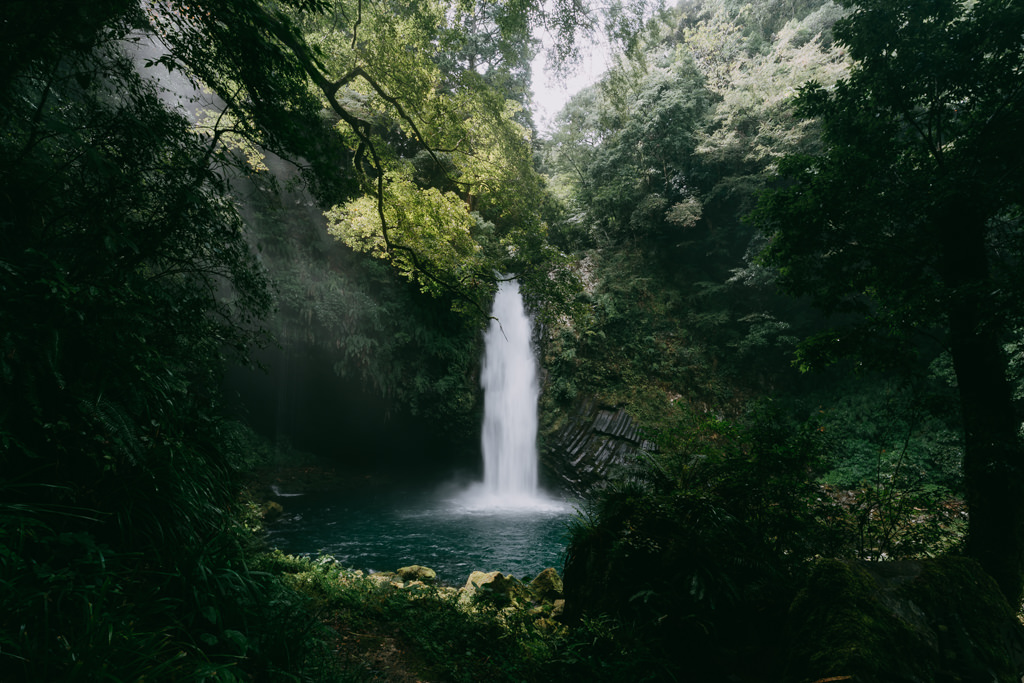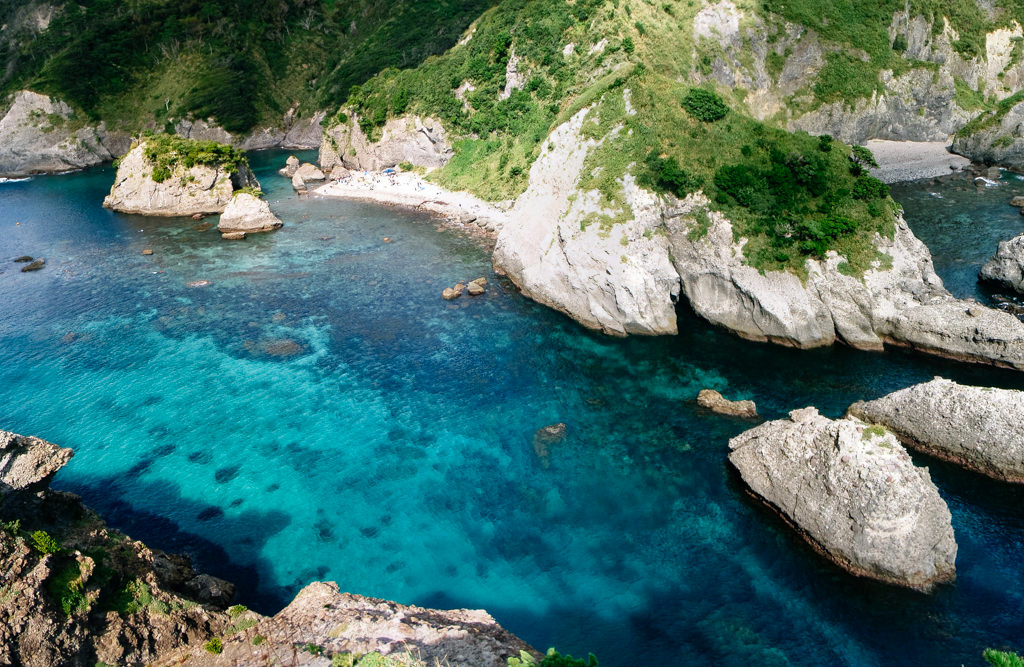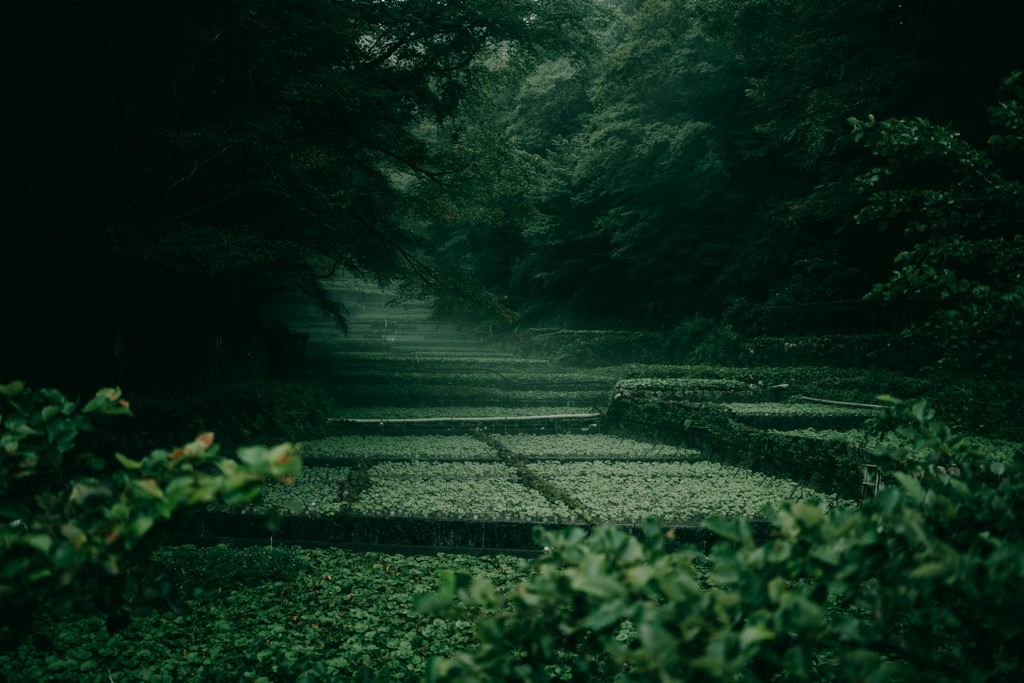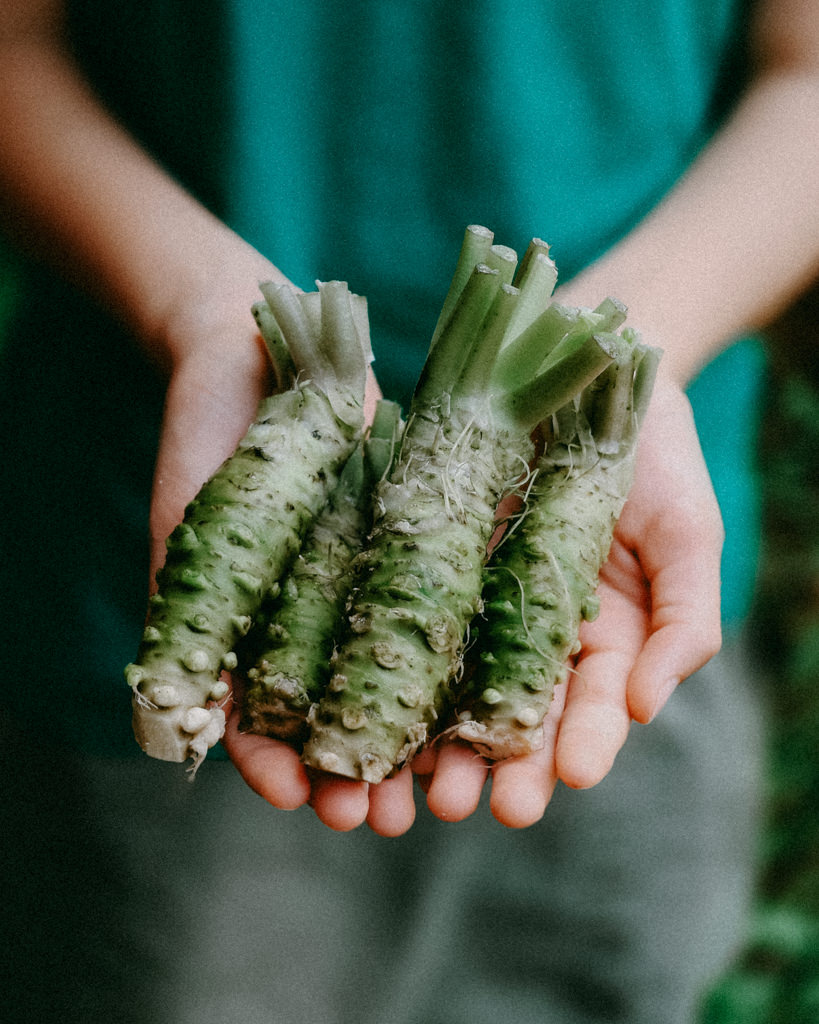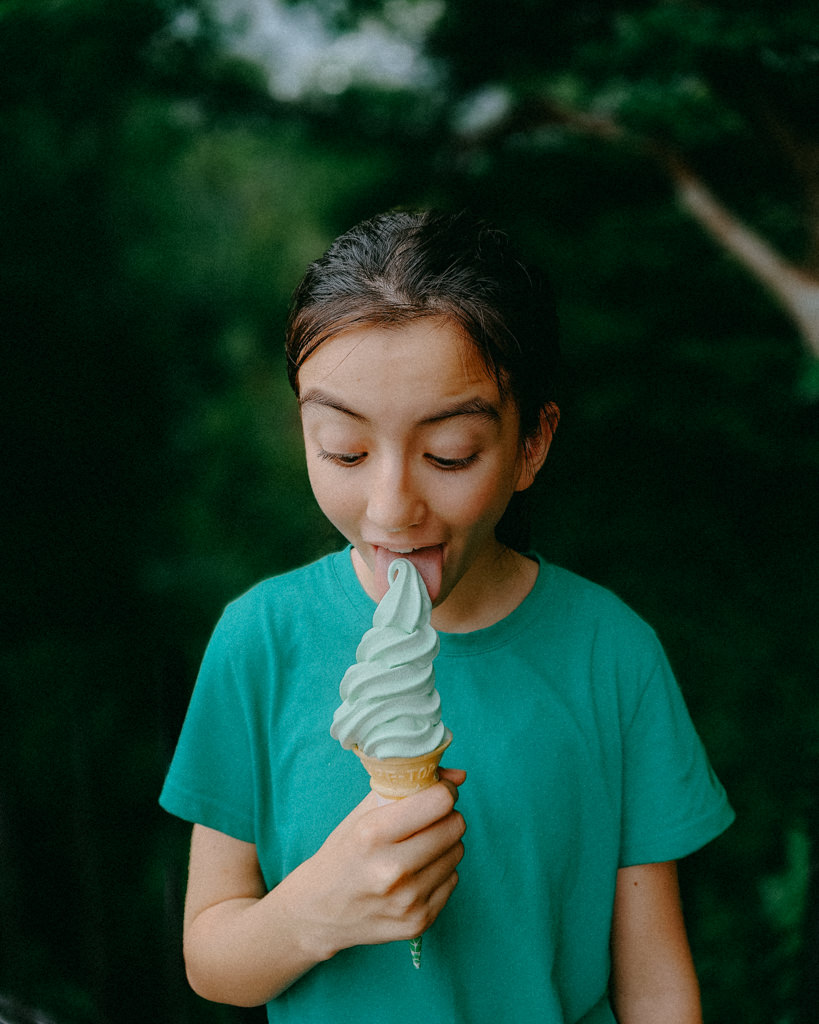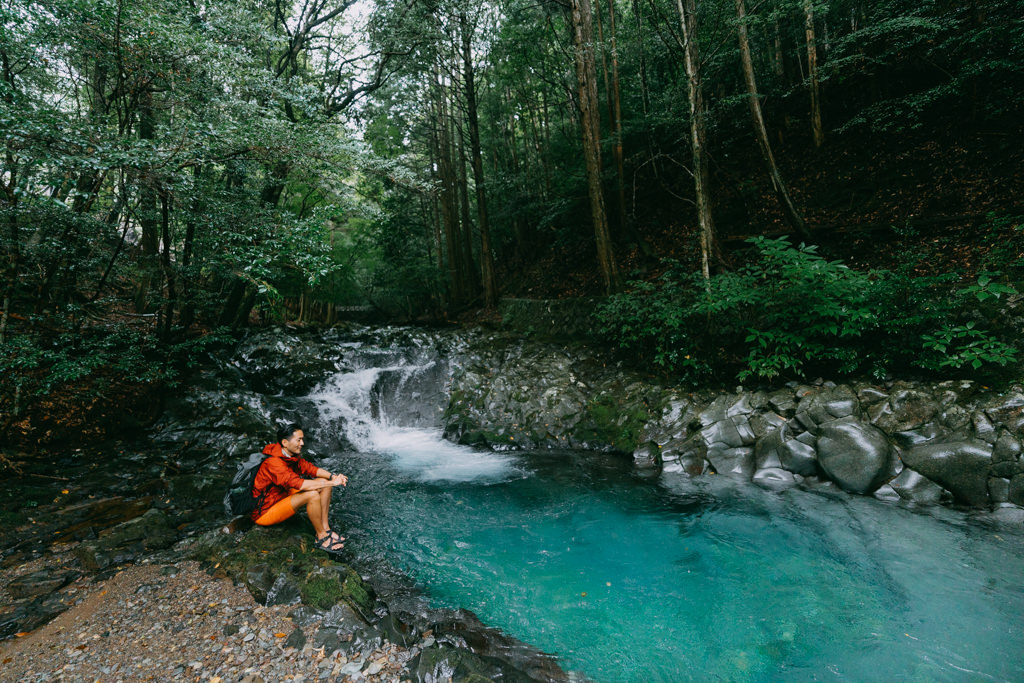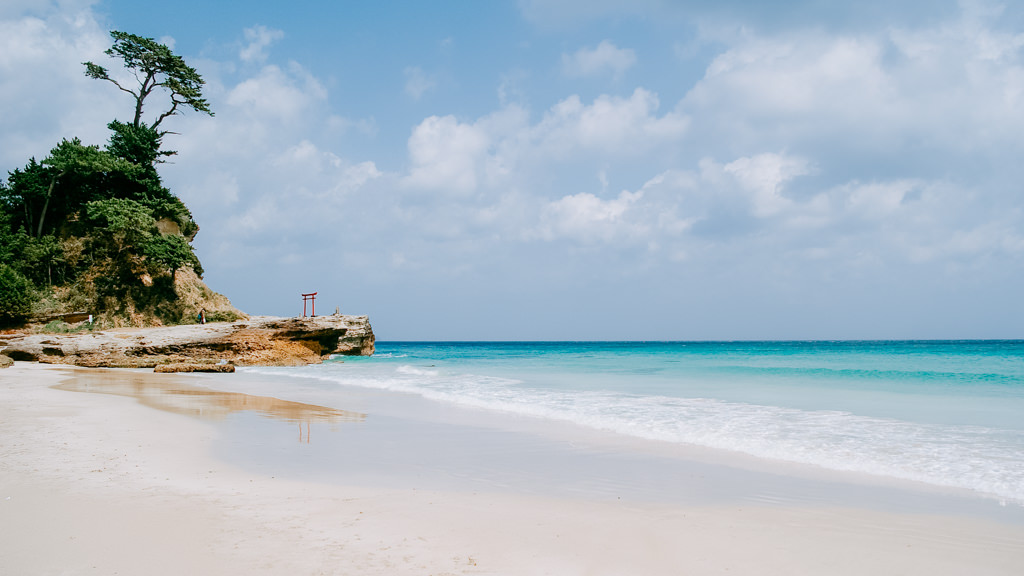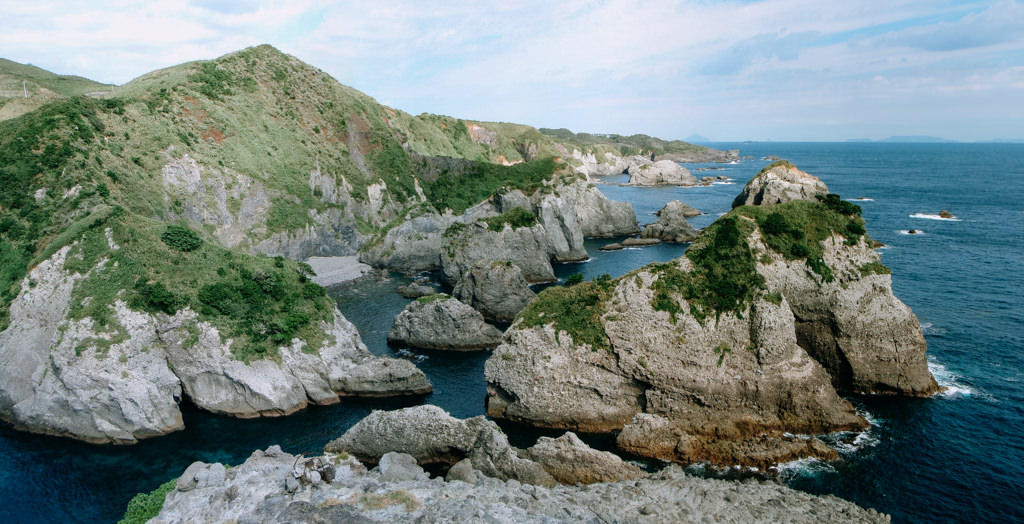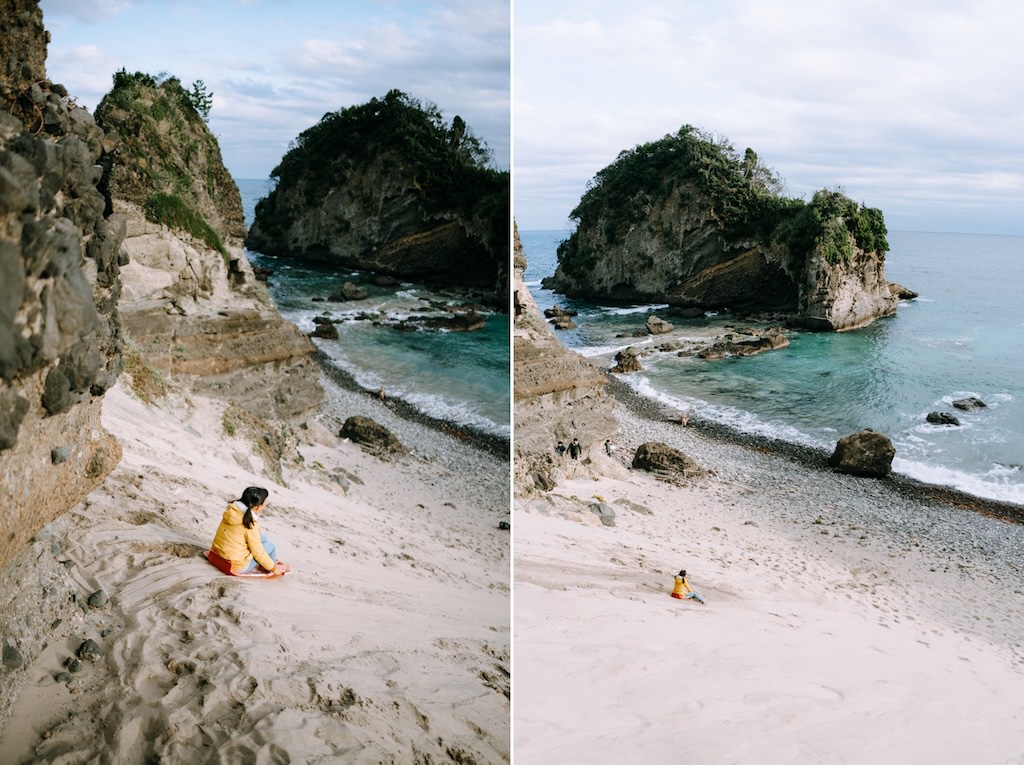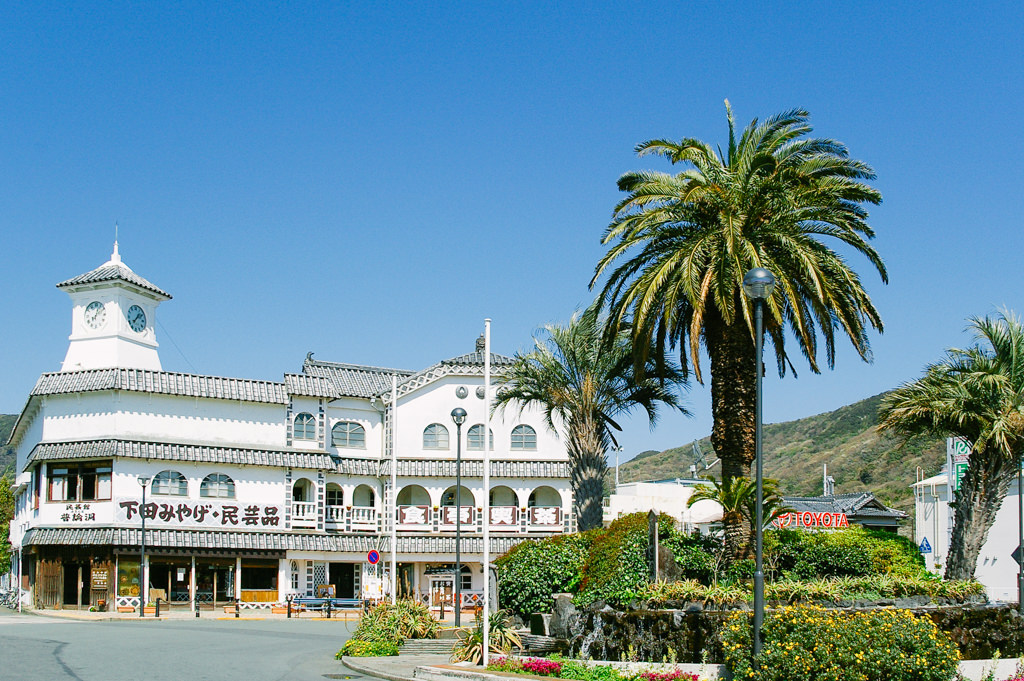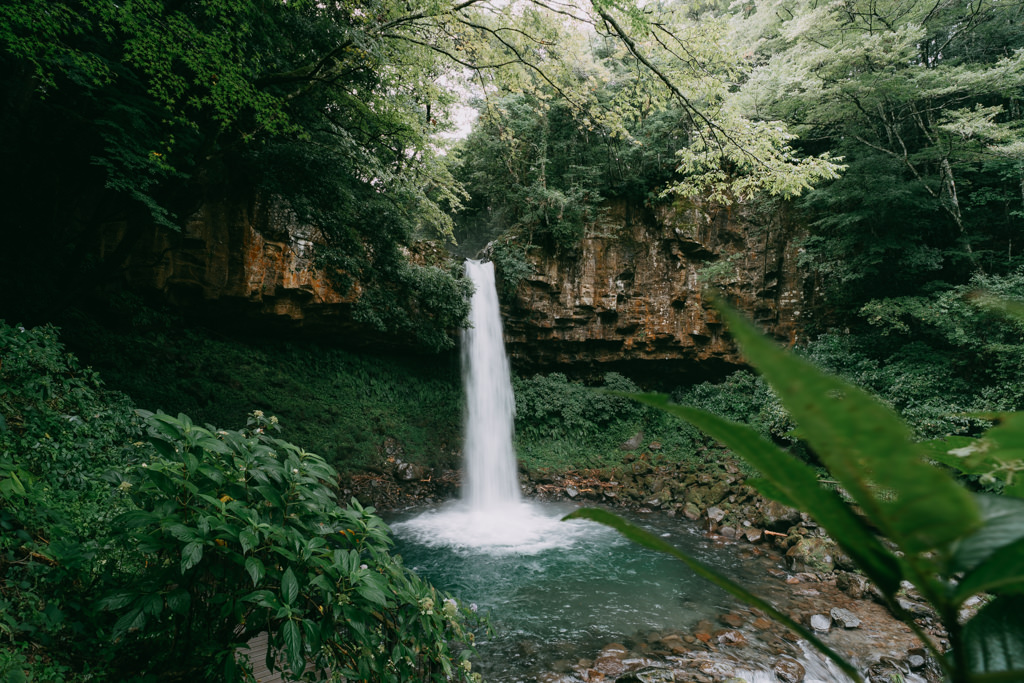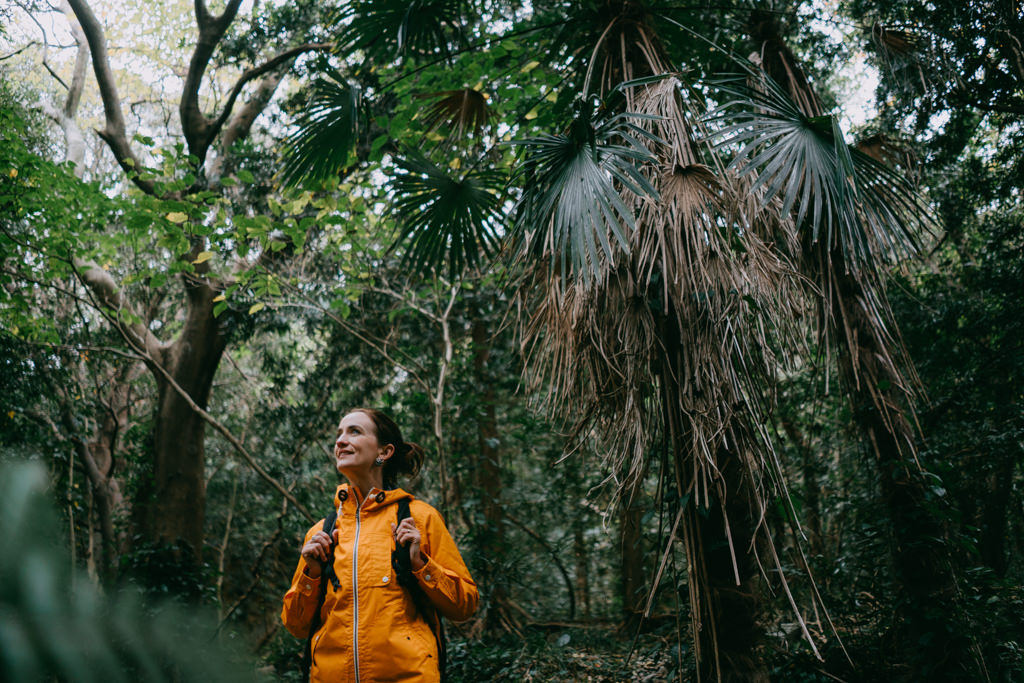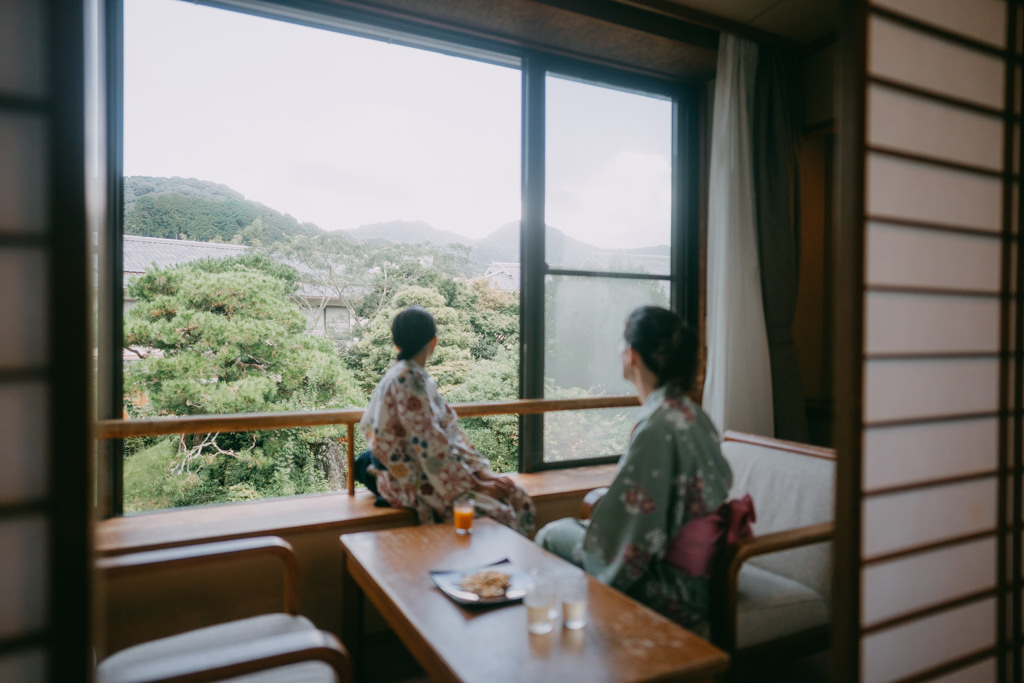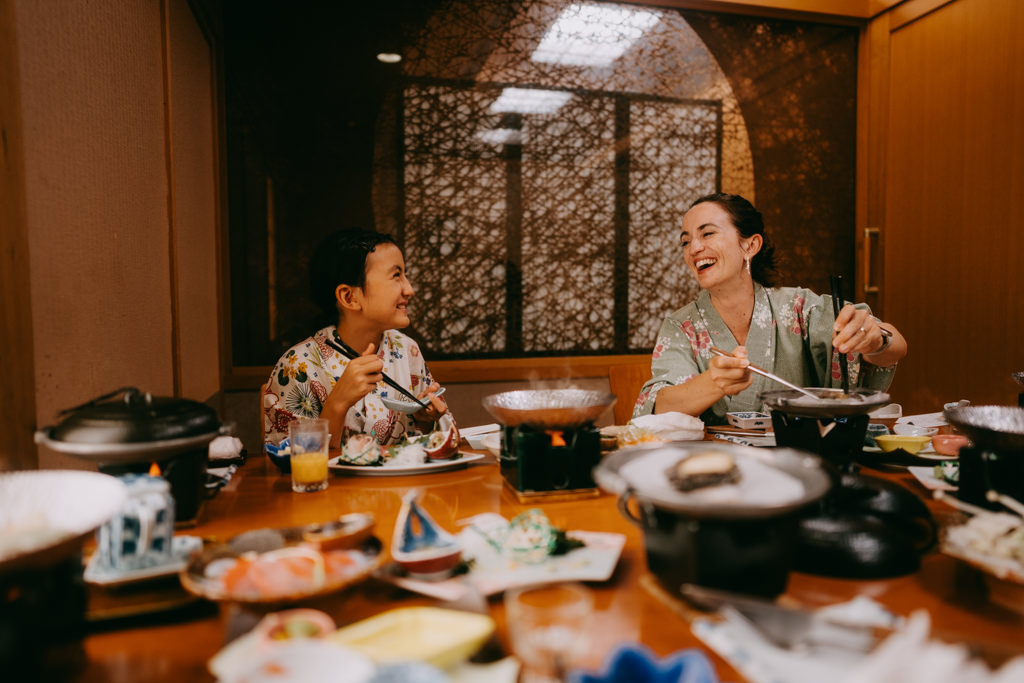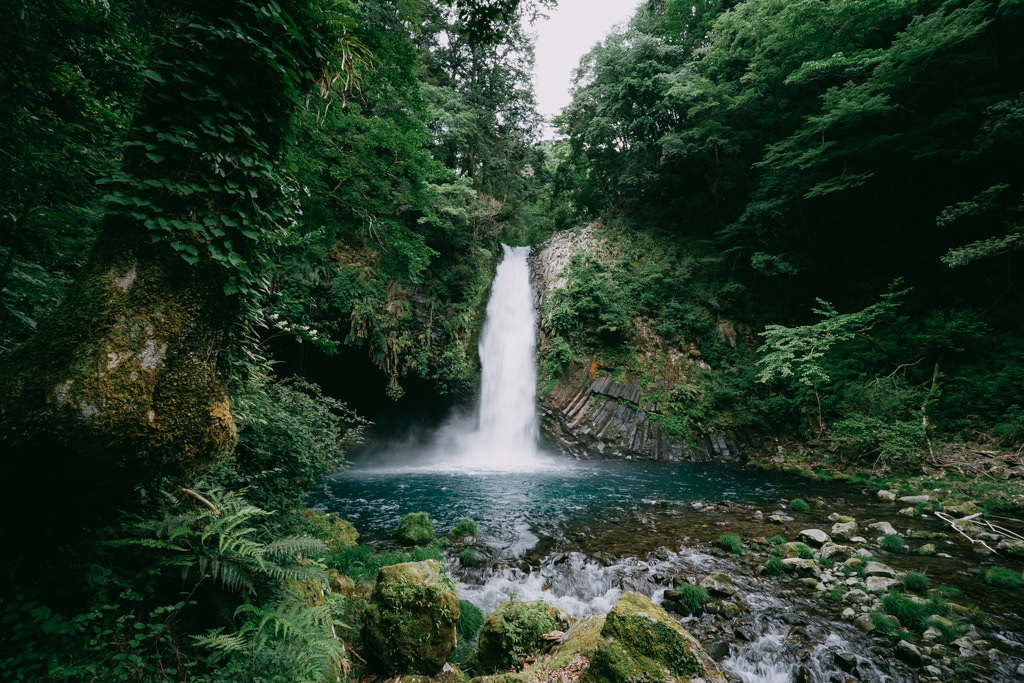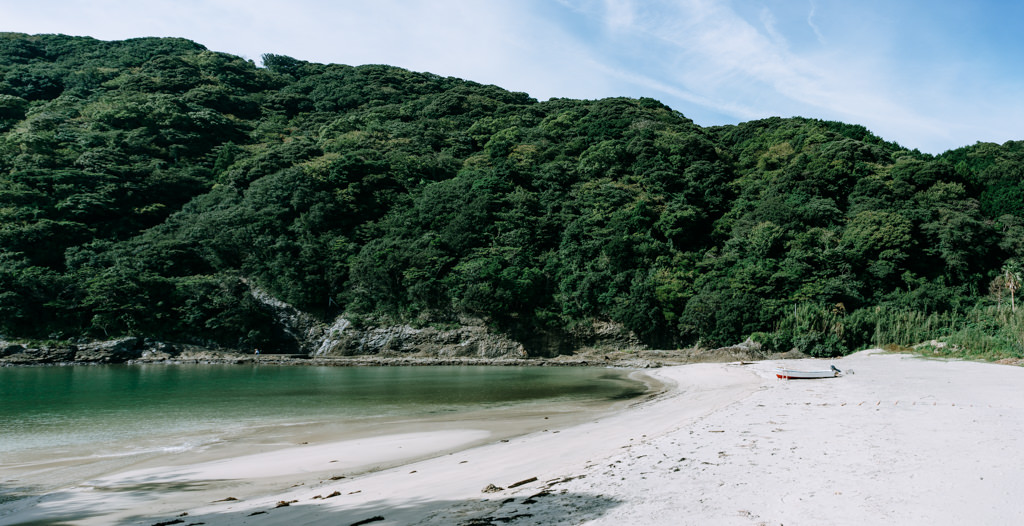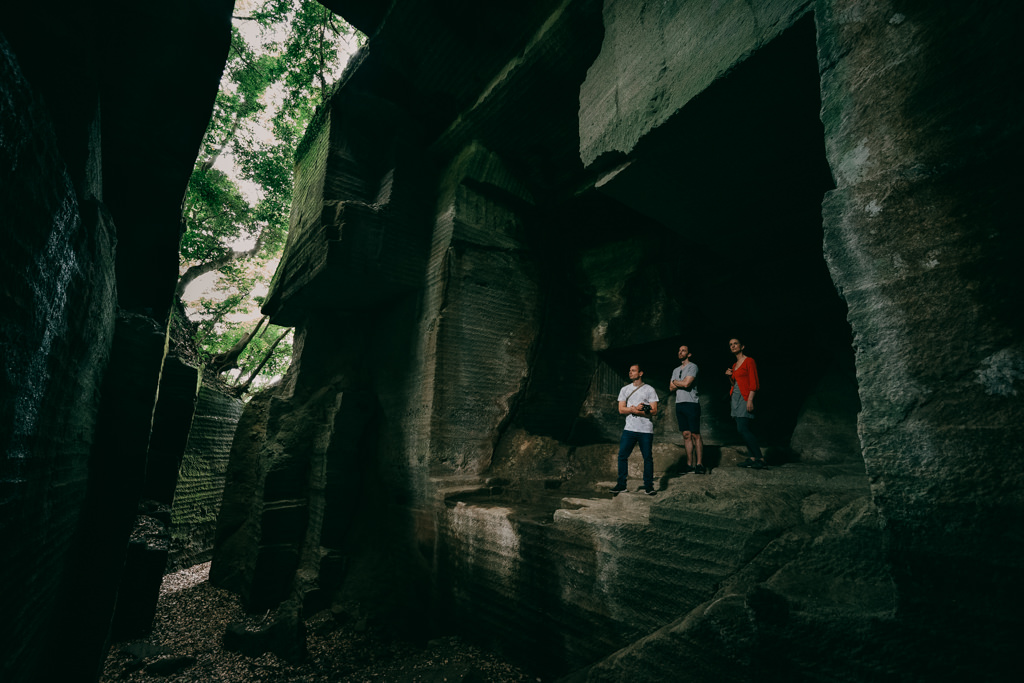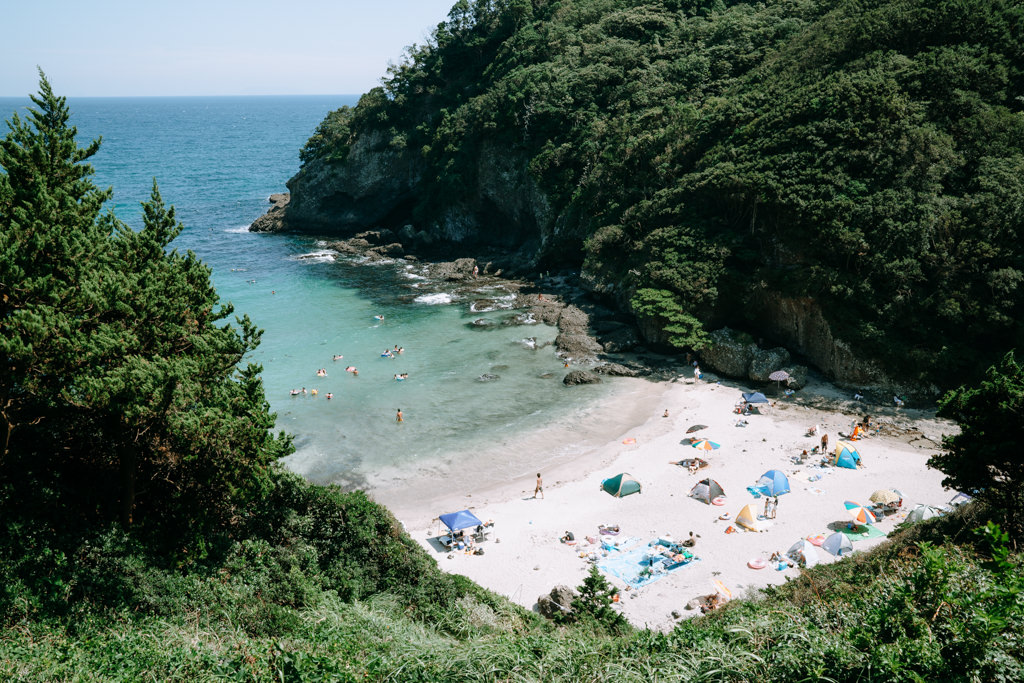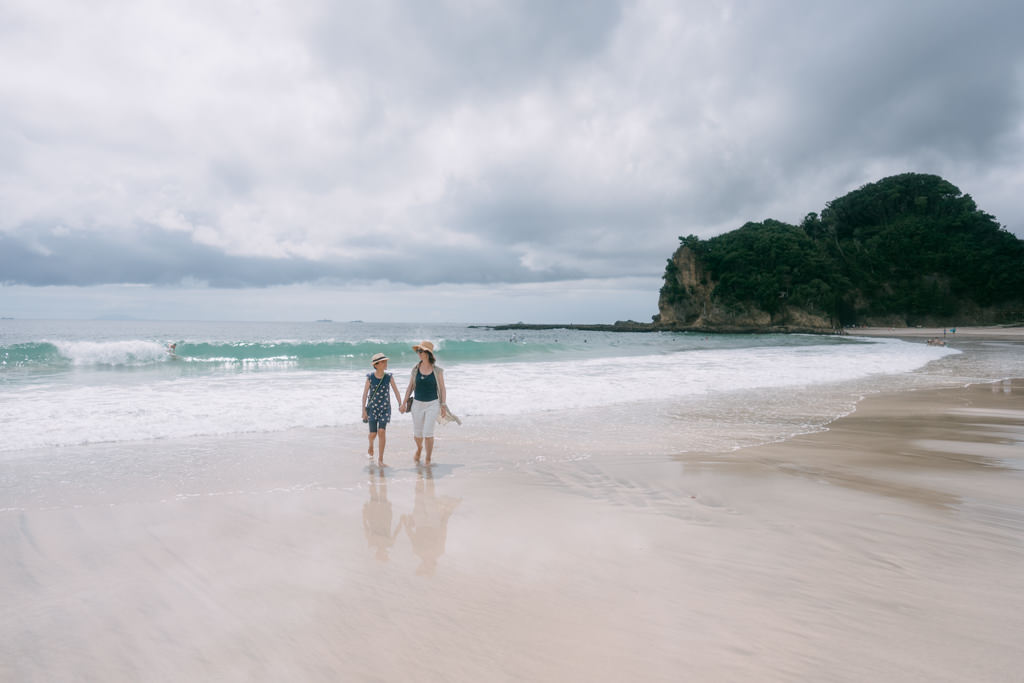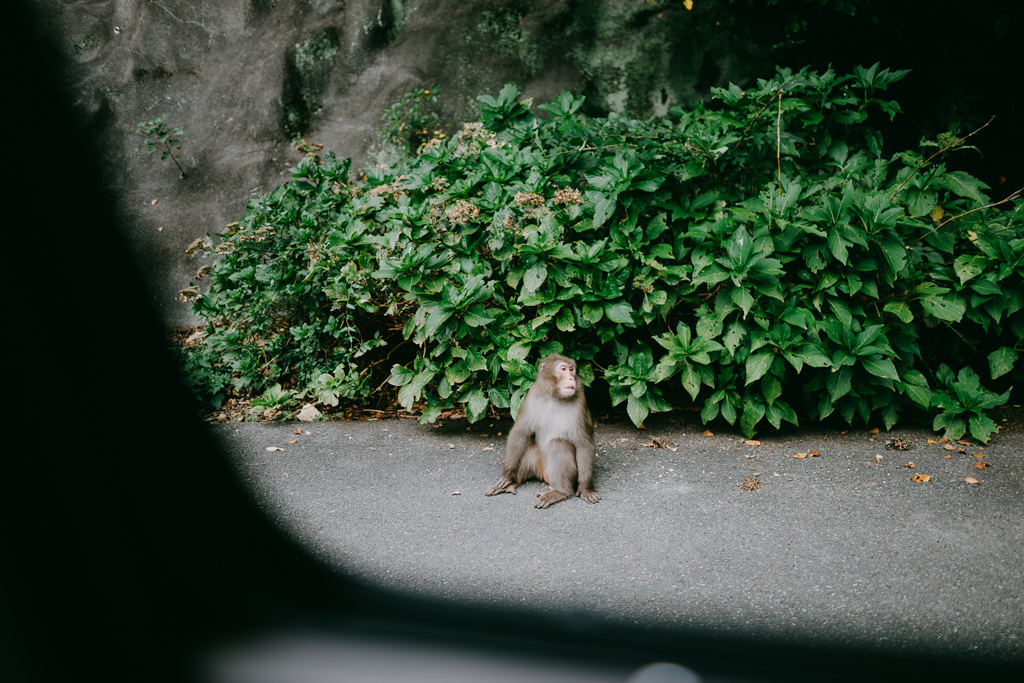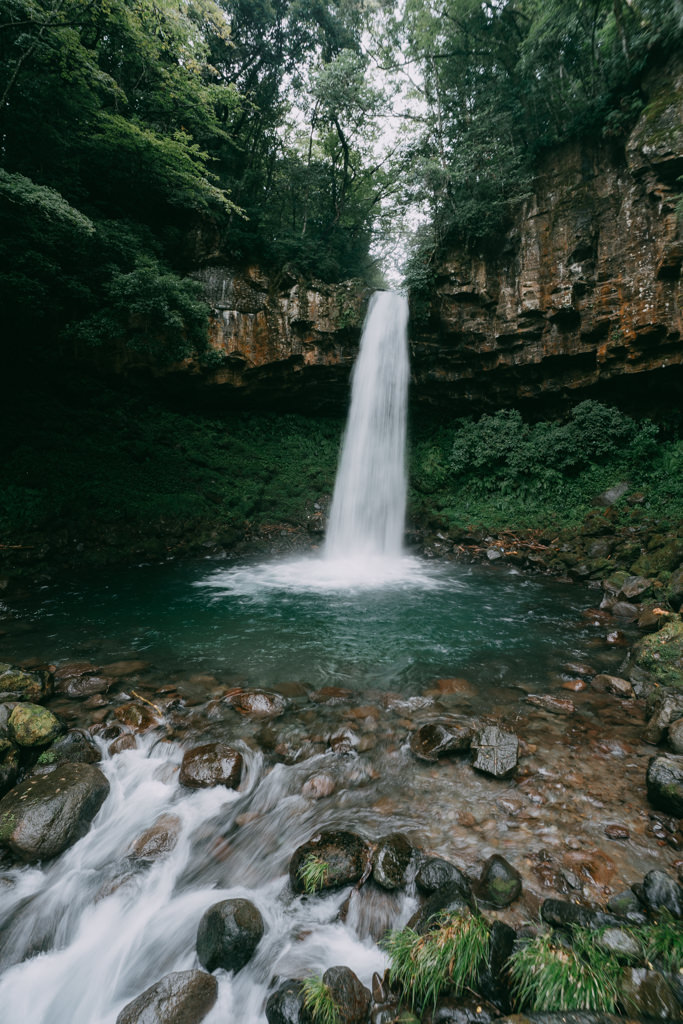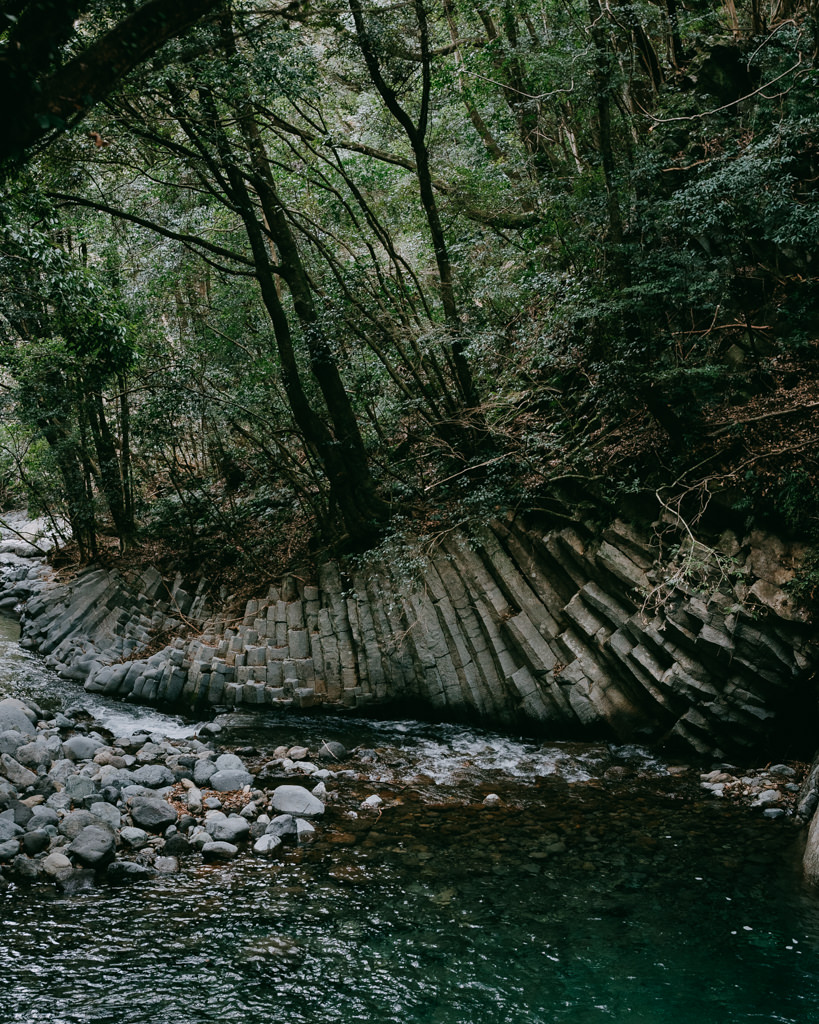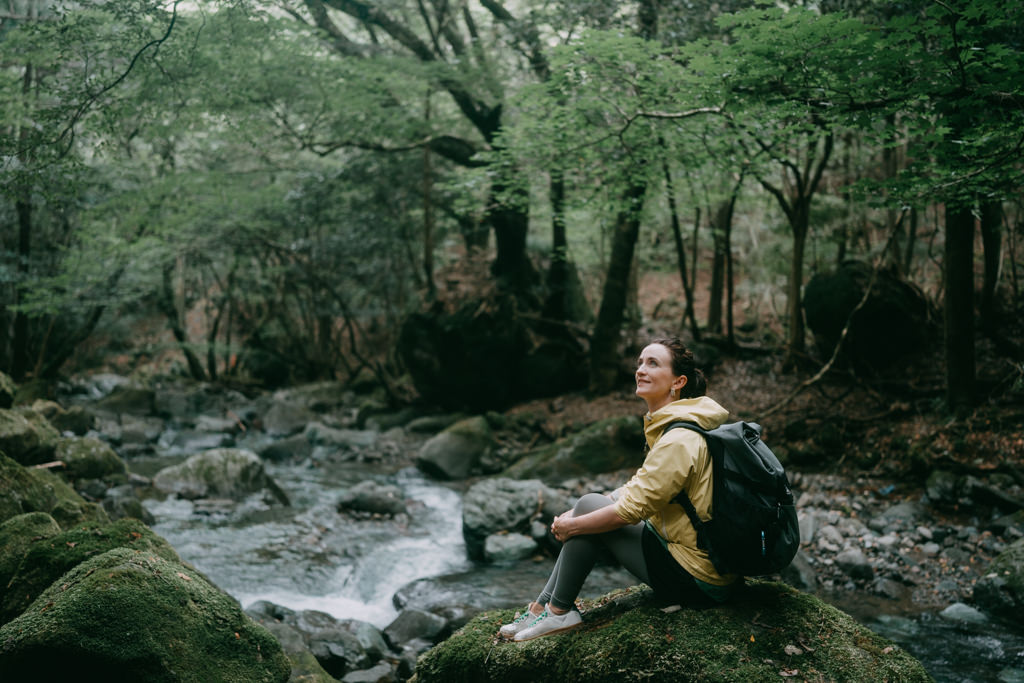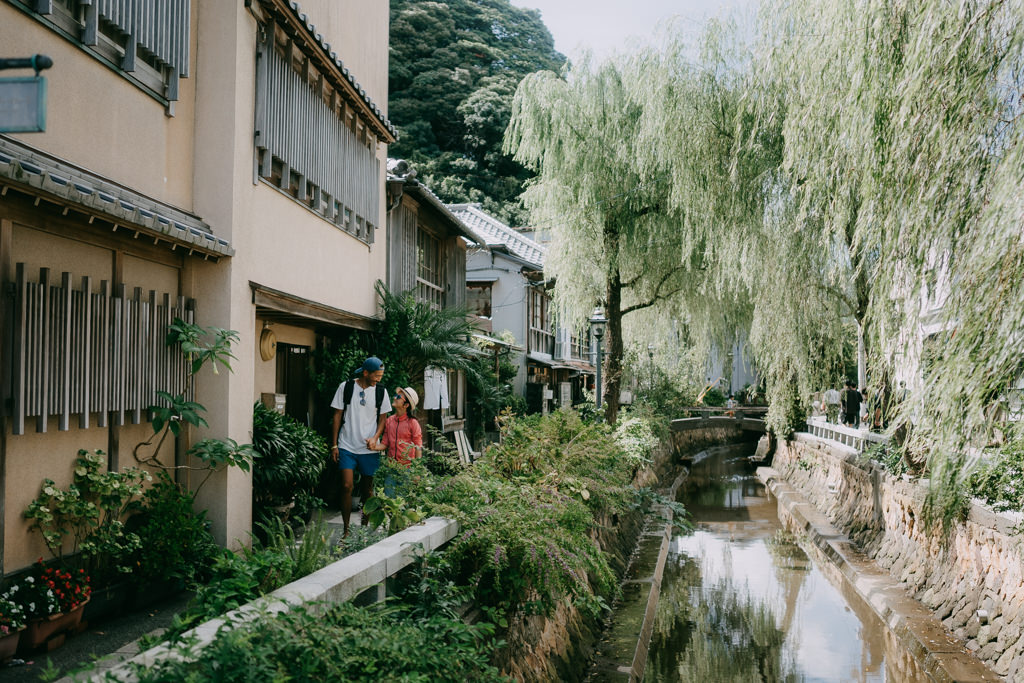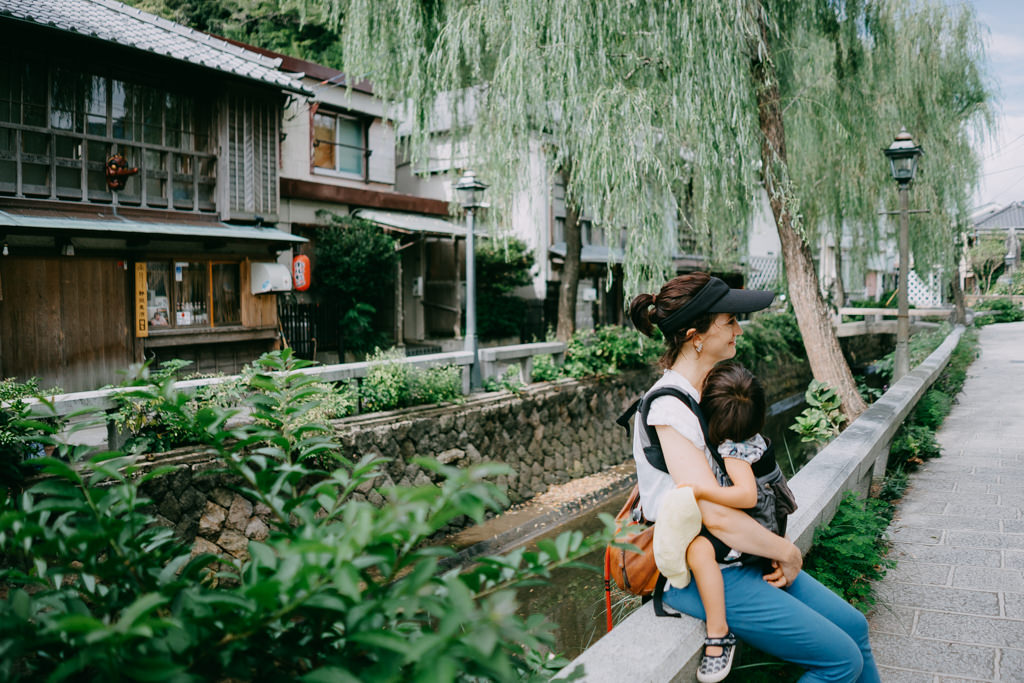Southern Izu Peninsula
Southern Izu, whilst not necessarily for a day trip (we recommend at least a night or two), has so much to offer. Southern Izu offers Japan’s best wasabi plantations, an abundance of traditional onsen ryokan, idyllic sandy beaches, clear water with colorful tropical fish and coral, sacred shrines and temples, UNESCO Global Geopark designated rugged coastline with many sea caves, mountains covered by evergreen forests and many waterfalls with clear streams, wild monkeys and deer, plus more.
We have many favorite destinations for a quick weekend trip from Tokyo, but most of those require a car, ferry or flight. Among those accessible by train, the southern part of Izu Peninsula is our favorite weekend getaway destination from Tokyo. You can easily spend more than a week in this large area, as it offers many different things to do all year round, not only for nature lovers but also for those who want to experience local traditions and cultures. Certainly hiring a car is best to explore the area properly if it’s not a quick overnight trip.
May to September are great months for all sorts of marine activities (even until mid-late October, as the water temperature often remains above 25C/77F during October in recent years), while other months are great to enjoy onsen. Local seasonal food, particularly seafood is great all year round with a vast variety. Winter is famous for native citrus fruits including Yuzu and various types of oranges, all grown locally.
As this is a popular area for getaways for Tokyo residents, we would recommend avoiding traveling during Golden Week (late April to early May), the Obon period (mid August), as well as weekends from mid July to the end of August (school holiday period). Even during these busy periods you can still find secluded beaches with very few people, but the traffic and lack of accommodation would be the issue.
Onsen: Southern Izu has so many onsen but Amagiso is a must with multiple onsen spots by a beautiful waterfall and river in the mountains of Amagi. We’ve been visiting this onsen for nearly two decades as it’s been our favorite in the area. It has survived damage by typhoons as well as a fire accident in that time. Currently their ryokan is under reconstruction after the fire, but their onsen is open for day use. Check their opening hours.
Before dipping into the onsen, we highly recommend taking an easy but beautiful hike on Kawazu Seven Waterfalls trail, which starts within a few minute walk from Amagiso.
We also recommend trying fresh wasabi ice cream from one of the shops around Amagiso, as this area is known for Japan’s best wasabi (99% of wasabi outside Japan is horseradish with artificial coloring so it’s safe to say it’s the world’s best wasabi :)). Real wasabi root is not very spicy but very fragrant.
Snorkeling spots: Hirizo Beach is the best snorkeling spot in Izu Peninsula with many colorful tropical fish, coral and green sea turtles in clear water. This remote rocky beach is accessible only with the shuttle boat service (from July 1st to September 30th). We recommend Hirizo only for weekdays as it gets too busy during weekends. Ounohama Beach is a great spot for off-the-beach snorkeling and also for sea cave kayaking. The west side of Ebisu Island is great for families with small children as the water is often calm with good clarity and many colorful fish (unless there is a strong south wind). If the wind condition is right, Goishigama Beach can be also good for off-the-beach snorkeling in clear water with many kinds of both tropical and temperate fish. For those who want to see sea turtles without going to Hirizo or taking a off-the-boat snorkeling tour, this spot in Kawana (entry from here) in northern Izu is highly recommended regardless of the season (note: the water clarity decreases easily with an east wind).
Sea caves: The coastline of southern Izu is full of sea caves and is designated as a UNESCO Global Geopark. Unlike the rest of Mainland Japan, Izu Peninsula sits on the Philippine Sea plate, and the peninsula used to be volcanic islands in the Pacific Ocean (it’s still pushing to Mainland Japan by 5cm per year). There are sea-kayaking tours to experience these great sea caves of southern Izu but there are also a few that you can visit easily such as Ryukugu Sea Cave (it’s great to combine with sand ski for families with small children). There is also a boat tour available to go though the sea cave of Dougashima. For those who can take a packraft/kayak/SUP like we do, we highly recommend this sea cave near Ounohama Beach, which is magical, but accessible only around low tide.
Beaches: Southern Izu has many nice beaches but the water clarity is very easily affected by wind as there is no reef, so it’s better to check the wind direction of the day and choose a beach which is not affected by wind (For example, visit a beach facing the west when it’s an east wind). Besides the obvious beaches such as Shirahama Beach, Yumigahama Beach, Sotoura Beach, Tatadohama Beach, Irita Beach and Kisami Ohama Beach, small cove beaches such as Kujuppama Beach and Nabetahama Beach are beautiful when the wind condition is in your favor. We wouldn’t recommend any of these beaches during busy periods (mentioned above). Even though some of them don’t get very busy, there is no place to park your car.
Our other recommendations:
- A walk through charming old streets of Shimoda such as Perry Road, and check out the traditional architecture of Shimoda’s fishermen town while enjoying local artisanal gelato.
- A coastal walk through the trail on Cape Tsumeki to enjoy the typical rugged coastline of Izu Peninsula. Cape Irozaki and Cape Aiai are also great spots to enjoy the rugged coastline which are designated as a UNESCO Global Geopark.
- Beach with wild monkeys at Hagachizaki Monkey Bay (great for families with small children who are interested in seeing freely roaming animals outside a zoo)
- Shirahama Shrine. There are many nice temples and shrines in southern Izu but this one is special.
- A quick hike (30 mins each way) along the beautiful stream of Namesawa Gorge where you can also see some wasabi plantations.
- Fresh wasabi ice cream and soft ice cream at the wasabi shops around Joren Falls (If you’re a waterfall enthusiast, Banjō Falls is also nearby). Although this spot is in the middle of the Izu Peninsula, it’s well worth a stop to see how wasabi is grown and to sample freshly made wasabi ice cream. For those interested in seeing expansive wasabi terraces (over 15 hectares), we highly recommend visiting the wasabi terraces in Ikadaba.
Places to stay:
There are many nice places to stay in southern Izu from traditional onsen ryokan, resorts with a swimming pool surrounded by palm trees, to family-run cozy boutique hotels.
Our all time favorites include:
- Garden Villa Shirahama – This super friendly family-run boutique hotel ticks a lot of boxes; onsen with a great ocean view, a picture-perfect pool with cocktail bar, sauna, rental bicycles and amazing meals. This hotel is great for all types of travelers from couples, solo to family (they also have cottages for families in the same premise, overlooking the Pacific Ocean). Best to book directly from their site.
- Amagiso – Traditional ryokan with many beautiful onsen by a waterfall and river. Currently under renovation after a fire accident (onsen is open for day use).
- Shimoda Tokyu Hotel – A legendary hotel in Shimoda since 1960’s, with an idyllic pool surrounded by tall palm trees, located right next to Nabetahama Beach. Their swimming pool (open from late June to late September) is usually for hotel guests only, but they sometimes run campaigns on Instagram to let visitors to use the swimming pool in conjunction with their breakfast buffet.
- Kagetustei – A truly classical ryokan with a Japanese garden and onsen. Their meals are also delicious, utilizing local seasonal ingredients.


